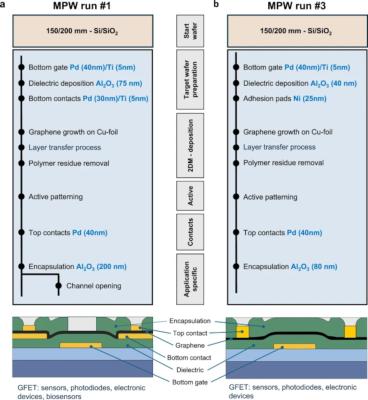2D-EPL project reports results of two multi-project wafer runs
Researchers from AMO, Graphenea and RWTH Aachen University have, as part of the European experimental pilot line for electronic and optoelectronic devices based on graphene and related two-dimensional (2D) materials, namely the Experimental Pilot Line (2D-EPL) project, reported the results obtained during the first and third multi-project wafer (MPW) runs completed at the end of 2022 (MPW run 1) and 2023 (MPW run 3).
The Experimental Pilot Line (2D-EPL) project, that aims to advance the widespread commercialization of electronic devices based on graphene, published the new report that summarizes the results of two multi-project wafer (MPW) runs, utilizing electrical and spectroscopic characterization to demonstrate the high quality of production in the 2D-EPL. MPW run 1 was intended mainly for graphene-based sensors, in particular chemical and biosensors, while MPW run 3 focused on graphene electronics.



